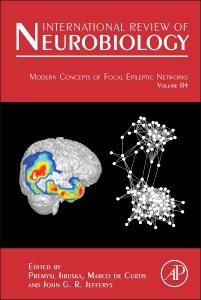Description
Modern Concepts of Focal Epileptic Networks
Author: Jiruska Premysl
Language: English
Subject for Modern Concepts of Focal Epileptic Networks:
364 p. · 15x22.8 cm · Hardback
Description
/li>Contents
/li>Readership
/li>Comment
/li>
This volume of International Review of Neurobiology concentrates on modern concepts of focal epileptic networks. The volume addresses specific topics such as seizures (including transition and termination), limbic networks, alteration of metabolism, and neocortical focus and malformation of cortical development, among others.
Published since 1959, International Review of Neurobiology is a well-known series appealing to neuroscientists, clinicians, psychologists, physiologists, and pharmacologists. Led by an internationally renowned editorial board, this important serial publishes both eclectic volumes made up of timely reviews, and thematic volumes that focus on recent progress in a specific area of neurobiology research.
- Modern Concepts of Focal Epileptic Networks
- Neocortical Focus: Experimental View
- Malformations of Cortical Development and Neocortical Focus
- Limbic Networks and Epileptiform Synchronization: The View from the Experimental Side
- Limbic Networks: Clinical Perspective
- Modern Concepts of Seizure Modeling
- Mechanisms of Ictogenesis
- Seizure Termination
- Epileptic Focus and Alteration of Metabolism
- Modern Techniques of Epileptic Focus Localization
- From Treatment to Cure: Stopping Seizures, Preventing Seizures, and Reducing Brain Propensity to Seize
Clinical and experimental epileptologists, neuroscientists, mathematicians and physicists interested in complex network dynamics
- Our knowledge about the mechanisms involved in pathophysiology of epilepsy has rapidly expanded during last decade
- This special volume brings overview about modern concepts of epileptic focus organization and about the altered neural network dynamics which results in propensity of the brain tissue to generate spontaneous and repeated seizures
These books may interest you

Brain Transcriptome 177.10 €

Imaging the Addicted Brain 166.19 €

Nanotechnology and the Brain 166.19 €

